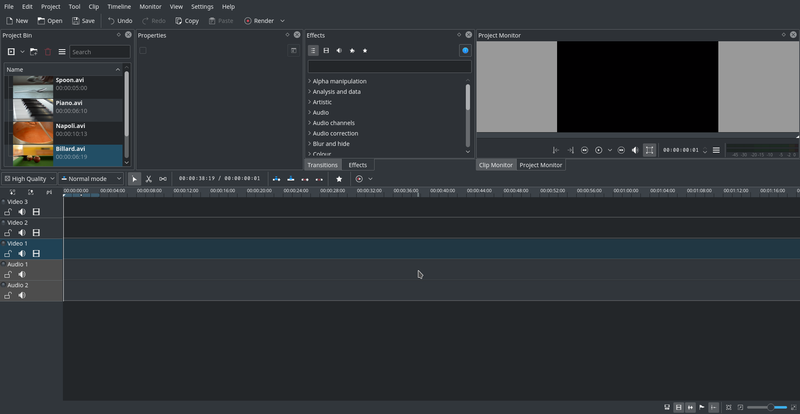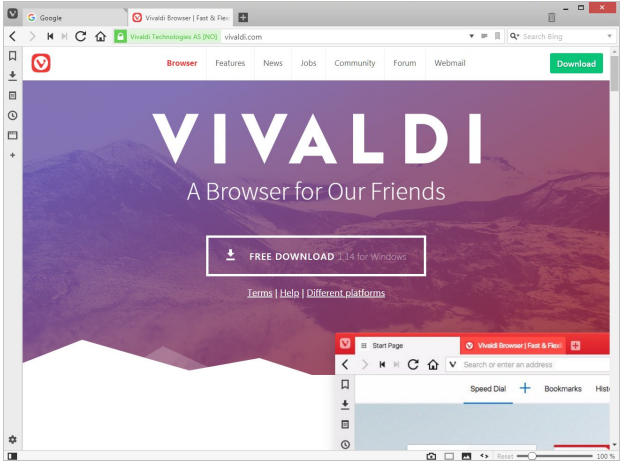NSLIG – April 2018

Back to Meeting Notes 2018
Notes from the April 2018 Meeting
[hr height=”30″ style=”default” line=”default” themecolor=”1″]
This month’s Linux News came in the form a video presentation about a video editor titled Kdenlive which is an acronym for KDE Non-Linear Video Editor. It is primarily aimed at the GNU/Linux platform but also works on BSD and MacOS. It has also been ported to Windows as a Google Summer of Code (GSOC) project.
Non-linear video editing is much more powerful than beginners’ (linear) editors, hence it requires a bit more organization before starting. However, it is not reserved to specialists and can be used for small personal projects. The program is Free Software and can be used under the terms of the GNU General Public License.
The video editing features include:
-
Multitrack edition with a timeline and virtually unlimited number of video and audio tracks, plus facilities for splitting audio and video from a clip in multiple tracks
-
Non-blocking rendering. You can keep working on a project at the same time a project is being transformed into a video file
-
Effects and transitions can be used with ease, and you can even create some wipe transitions of your own!
-
Simple tools for easy creation of color clips, text clips and image clips
-
Automatic slideshows creation from pictures directories, with crossfade transitions among the images
-
Configurable keyboard shortcuts and interface layouts
There are tutorials and sample video clips available via the Help facility. A simple example is shown below with short tutorial sample video clips in place.

Kdenlive main window showing tutorial files
To construct a video from the clips, they are dragged onto the Timeline. This is the place where the video clips will be edited. The clips can be edited, and transitions between them provided. The simplest transition is a dissolve, where the earlier clip fades in to the later one. When the user is satisfied with resulting file, it can be rendered to create a final and playable result.
The presentation showed two views of a steam train pulling in to a station, with audio of the whistle blowing. As the television advertisement says “Simples”. For more information about Kdenlive visit their web site at kdenlive.org
There were comments about other Linux-based video editors. Wikipedia has a list of all of them; the list is said to be “huge”
The Open Forum started with a comment/question about the startup time of Linux Mint. The user commented that successive releases have become slower during startup, so that Mint 18 is slower than Mint 17, and so on. The response was that the developers plan to change the boot approach for Mint 19 and that should improve boot performance on an ongoig basis.
An additional comment was that the Phoronix web site tracks many Linux developments, particularly with hardware, and provides comprehensive benchmark results as well.
A question was asked about disposal of printers. There is a location in Camberwell where old computer-related items can be taken for recycling or disposal, and a web site recyclingnearyou.org.au that provides information on recycling locations for many types of no-longer-wanted items.
The evening’s main presentation was by our convenor, David Hatton, and was another of his continuing Random Bytes series. Two topics were covered, the first being the Vivaldi web browser.
The Vivaldi browser came as both a response to a change in direction at Opera and a response to the belief that many browsers have been too “dumbed down” and that there is a need for a “browser for power users”.
Vivaldi is derived from the Chromium browser. As a consequence of the Chromium base, Chrome extensions usually work well in Vivaldi. It has many built-in fuctions which are often delivered by plug-ins in other browsers. Vivaldi is available for Linux in .deb and .rpm form on 64 and 32 bit versions, and for the Arm platform as an unsupported 32 bit version. A Mac OS version is also available, as are 32 and 64 bit versions for Windows 7 or later.
The Linux programs are downloadable directly from Vivaldi, and not the respositories for the various distributions. The download is only 52MB, small by today’s standards.
Vivaldi has a number of fairly unique features, including:
-
Notes – take notes and link them to a site;
-
Side Panel – To access bookmarks, downloads and notes;
-
Web Panels – for side-by side browsing;
-
Tab Stacking – drop tabs and save them as a stack;
-
Bookmarks Bar – toolbar to manage bookmarks;
-
Mouse Gestures – Perform key browser actions using the mouse;
-
Screen Capture – Full and part screen capture.

The Vivaldi Browser start page in a tab
The Vivaldi browser is an exciting addition to the browsers available for Linux users.
The second topic that David spoke about was the Spectre and Meltdown flaws and the current status regarding Linux.
Suggestions for checking on Linux mitigations can be found in an article on the maketecheasier web site at http://www.maketecheasier.com, which also has links to a Spectre and Meltdown checker for Linux.
One way of checking on your machine is via the command:
[code]# grep . /sys/devices/system/cpu/vulnerabilities/*[/code]
(Note that this needs to be run with super user privileges, and may not be available in all distros)
A more extensive check can be run by downloading a script from
https://github.com/speed47/spectre-meltdown-checker
Download the script using the commands detailed in the instructions on the site, check the script to confirm that there is nothing that has been corrupted, and run with super user privileges. The output is very extensive – but you will need to read the disclaimer to avoid any false sense of security and better understand the results.


